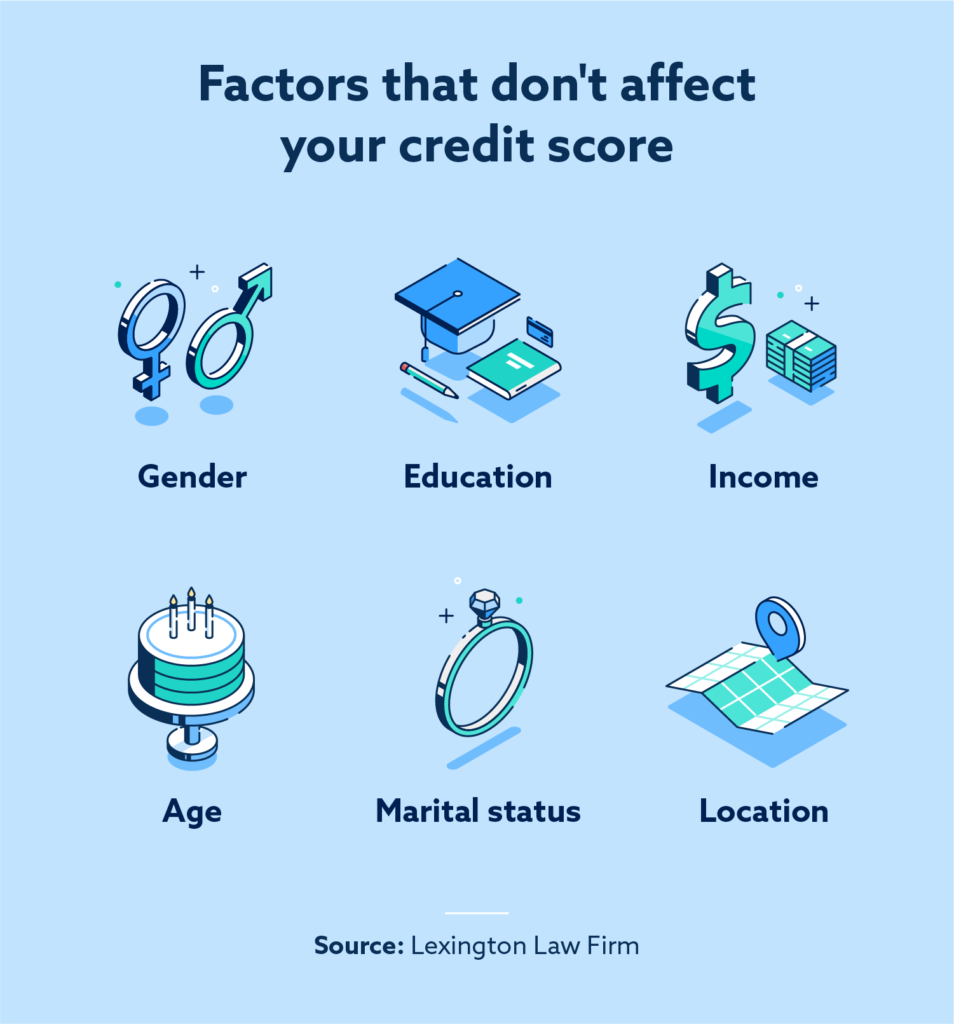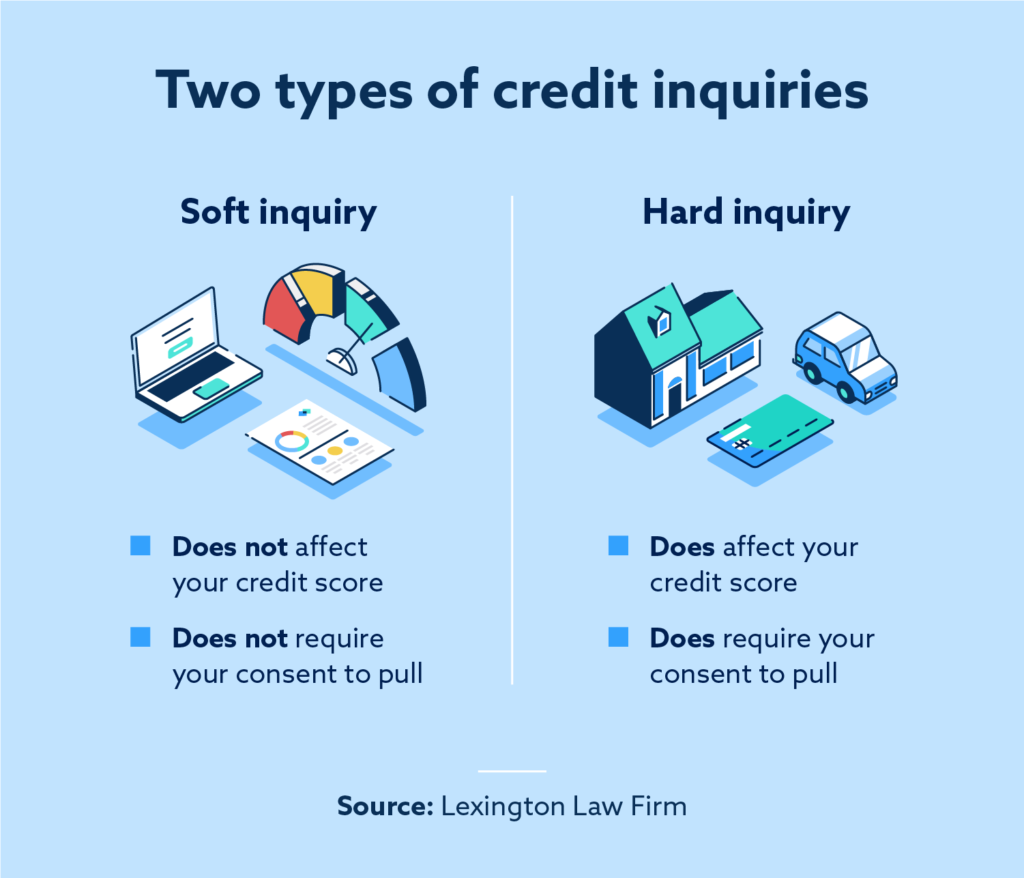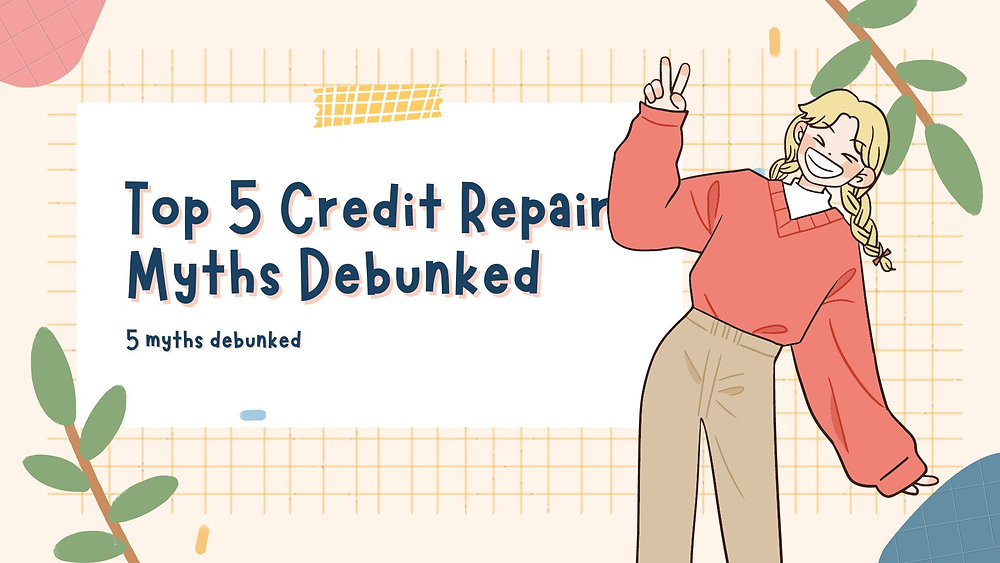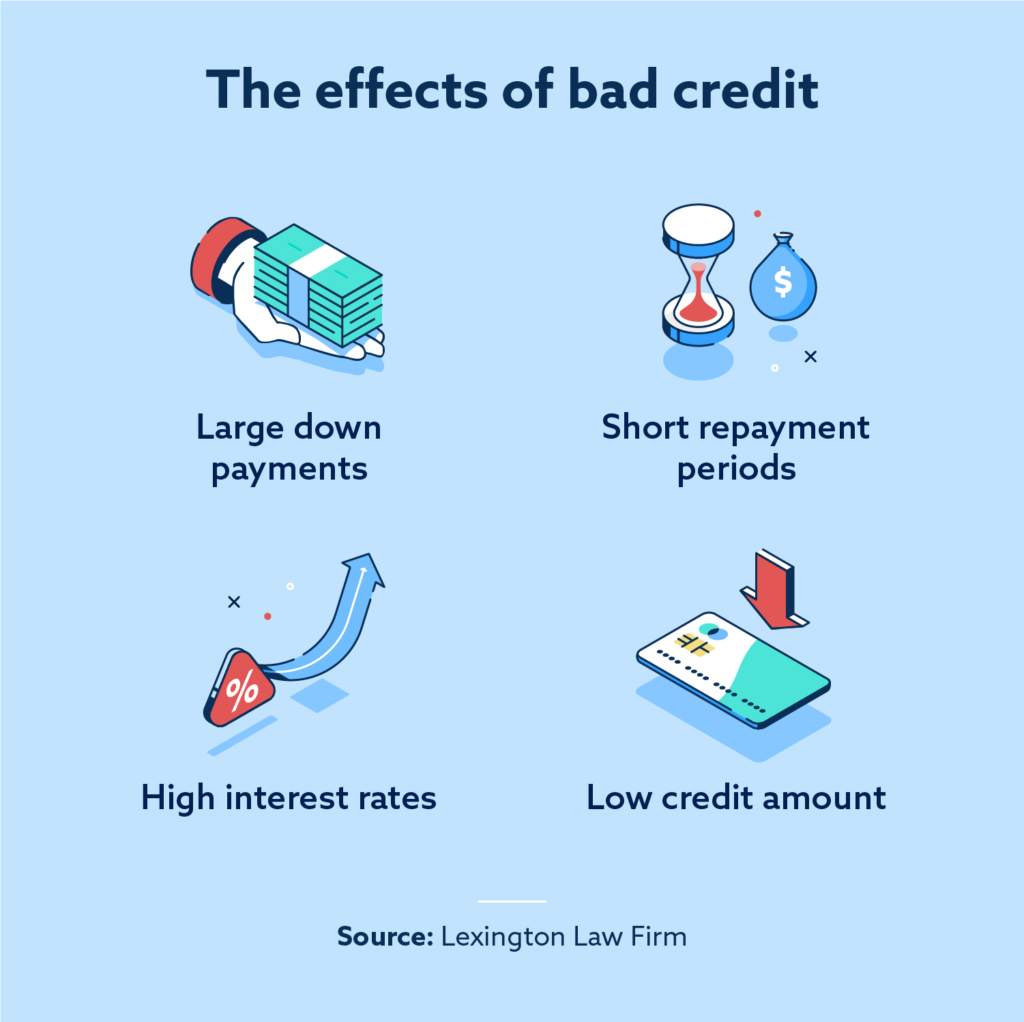Let’s talk about debunking credit repair myths and what really works when it comes to improving your credit. In this article, you’ll find valuable information on various topics such as the basics of credit scores, fixing errors, building credit, and much more. We’ll dive into the truth behind common misconceptions and provide you with actionable tips to help you on your credit repair journey.
If you’re looking to gain a deeper understanding of credit repair and learn strategies that actually work, this article has got you covered. We’ll discuss topics ranging from credit repair vs. debt settlement to negotiating with creditors. You’ll also find helpful advice on how to repair your credit on your own or decide if hiring a professional repair company is the right choice for you. With accurate information, reliable sources, and real-life success stories, we aim to engage and empower you with the knowledge you need to improve your creditworthiness. So, keep reading and discover what really works in the world of credit repair.
Basics of Credit Scores
What are Credit Scores?
Credit scores are numerical representations of an individual’s creditworthiness. They are used by lenders, creditors, and other financial institutions to assess the likelihood of a borrower repaying their debts. Credit scores are calculated based on information gathered from the individual’s credit history, which includes details about their credit accounts, payment history, and other relevant financial activities.
Factors Affecting Credit Scores
Credit scores are influenced by various factors that indicate a person’s creditworthiness. These factors include:
-
Payment History: One of the most significant factors affecting credit scores is the individual’s payment history. Late payments, missed payments, or defaults on loans can have a negative impact on credit scores.
-
Credit Utilization: Credit utilization refers to the percentage of available credit that a person is currently using. High credit utilization can lower credit scores, as it suggests that an individual may be relying too heavily on credit.
-
Length of Credit History: The length of an individual’s credit history also plays a role in determining their credit scores. Generally, a longer credit history demonstrates a person’s ability to manage credit responsibly.
-
Types of Credit: The variety of credit accounts a person has can impact their credit scores. A healthy mix of credit, such as credit cards, loans, and mortgages, can positively influence credit scores.
-
Credit Inquiries: When a person applies for new credit, it results in a hard inquiry on their credit report. Multiple hard inquiries within a short period of time can indicate financial instability and negatively affect credit scores.
Understanding Credit Score Ranges
Credit scores are typically represented on a scale, with different ranges indicating different levels of creditworthiness. The most commonly used credit scoring model is the FICO score, which ranges from 300 to 850. The credit score ranges are generally classified as follows:
-
Excellent (800-850): Individuals with credit scores in this range are considered to have excellent creditworthiness. They are likely to have no or very few negative entries on their credit report.
-
Good (670-799): Credit scores in this range indicate good creditworthiness. Individuals in this range are generally seen as responsible borrowers.
-
Fair (580-669): This credit score range suggests that there may be some negative entries or delinquencies on the individual’s credit report. Lenders may view these individuals as more risky borrowers.
-
Poor (300-579): Credit scores in this range indicate a significant number of negative entries and a high risk of default. Individuals with scores in this range may struggle to get approved for credit or loans.
It’s important to note that credit score ranges may vary slightly depending on the credit reporting agency or scoring model used. Individuals should also regularly check their credit reports for accuracy and monitor their credit scores to ensure they accurately reflect their financial standing.
Fixing Errors in Credit Reports
Common Credit Report Errors
Credit report errors can occur for various reasons, and it’s essential to identify and correct these errors to maintain good credit. Some common credit report errors include:
-
Incorrect Personal Information: Personal information such as name, address, or social security number may be reported inaccurately.
-
Outdated or Inaccurate Account Information: Closed accounts may still be reported as open, or the account balance may be inaccurate.
-
Duplicate Accounts: Sometimes, the same account may be reported multiple times, leading to an incorrect representation of credit utilization.
-
Incomplete Payment History: Missing or inaccurate records of timely payments can negatively impact credit scores.
-
Identity Theft: Instances of identity theft can result in fraudulent accounts or activities appearing on a person’s credit report.
Disputing Credit Report Errors
If you come across any errors on your credit report, it’s crucial to take immediate action to correct them. The following steps can help you dispute credit report errors effectively:
-
Obtain a Copy of Your Credit Report: Start by requesting a free copy of your credit report from each of the three major credit bureaus: Experian, Equifax, and TransUnion. You can get a free copy once a year from each bureau through AnnualCreditReport.com.
-
Review Your Credit Reports: Carefully examine each section of your credit report, focusing on personal information, account details, and payment history. Note any errors or discrepancies you find.
-
Gather Supporting Documentation: Collect any documentation that supports your claims of inaccuracies. This may include payment receipts, correspondence with creditors, or any other relevant documents.
-
Initiate the Dispute Process: Contact the credit bureau responsible for the error in writing or file a dispute online through their website. Provide a clear explanation of the error, along with the supporting documentation.
-
Follow Up and Monitor Your Credit Report: The credit bureau has 30 to 45 days to investigate your dispute and provide a response. Continue to monitor your credit report to ensure the error is corrected, and follow up with the credit bureau if necessary.
Working with Credit Bureaus
When disputing credit report errors, it’s essential to understand how credit bureaus operate and how to effectively communicate with them. Here are some tips for working with credit bureaus:
-
Contact All Three Credit Bureaus: If you find an error on your credit report, make sure to contact each of the three major credit bureaus individually. Disputes filed with one credit bureau will not automatically update the information with the others.
-
Keep Detailed Records: Maintain copies of all your correspondence with the credit bureaus, including letters, emails, and any supporting documentation. This will help you keep track of your dispute and provide evidence if needed.
-
Be Persistent: If the credit bureau’s response does not resolve the error satisfactorily, continue to escalate your dispute by contacting higher levels of management within the credit bureau or seeking legal assistance if necessary.
-
Consider Working with a Credit Repair Agency: If you find the dispute process overwhelming or time-consuming, you may choose to work with a reputable credit repair agency. However, it’s important to research and choose an agency carefully, as not all credit repair companies have the best interests of consumers in mind.
Remember, correcting errors on your credit report is essential for maintaining a healthy credit profile. By taking the necessary steps to dispute inaccuracies, you can improve your creditworthiness and increase your chances of obtaining favorable credit terms in the future.

This image is property of www.lexingtonlaw.com.
Debunking Credit Repair Myths
The Truth Behind Quick Credit Fixes
In today’s society, where instant solutions are often sought, many myths have emerged regarding quick credit fixes. It’s important to understand the truth behind these myths to navigate the credit repair process effectively. Let’s debunk some of the most common credit repair myths:
Myth: Closing Unused Credit Accounts Helps Improve Credit
Fact: Contrary to popular belief, closing unused credit accounts can actually have a negative impact on your credit scores. When you close a credit account, you reduce your total available credit, which can increase your credit utilization ratio. Additionally, closing older accounts may shorten your credit history, which is another factor used to calculate credit scores. Instead of closing unused accounts, consider keeping them open and using them occasionally to maintain a positive credit history.
Fact: Credit Repair Agencies Cannot Remove Accurate Information
Credit repair agencies often promise to remove negative information from your credit report, but the truth is that they cannot remove accurate information. Negative items such as late payments, bankruptcies, or collections that are accurate and verifiable will remain on your credit report for a predetermined period, typically seven to ten years. Be wary of any credit repair agency that makes false promises or guarantees to remove accurate information from your credit report.
Building Credit
Establishing Credit History
Building a good credit history is essential for financial success. If you have little to no credit history, here are some steps you can take to establish credit:
-
Open a Secured Credit Card: Secured credit cards require a cash deposit as collateral and are designed for individuals with limited or no credit history. This type of card allows you to make purchases and build credit by making timely payments.
-
Become an Authorized User: If you have a trusted friend or family member with good credit, ask them to add you as an authorized user on one of their credit cards. Their positive payment history can help boost your credit history.
-
Apply for a Credit Builder Loan: Some financial institutions offer credit builder loans specifically designed to help individuals build credit. These loans typically require you to make monthly payments, with the funds being held in an account until the loan is repaid in full.
-
Utilize Rent and Utility Payments: Some credit bureaus offer services that allow you to report your rent and utility payments, which can contribute to building your credit history over time.
Building a Positive Payment History
One of the most crucial aspects of building good credit is establishing a positive payment history. Here are some strategies to help you build a strong payment history:
-
Pay Your Bills on Time: Make it a priority to pay all your bills, including credit card payments, loans, and utilities, on time. Late or missed payments can have a significant negative impact on your credit scores.
-
Set Up Payment Reminders: Utilize reminders and automatic payments to help ensure you never miss a payment. This can be done through online banking platforms or by setting up alerts on your phone.
-
Keep Credit Utilization Low: Aim to keep your credit utilization ratio below 30%. High credit utilization can indicate financial instability and may negatively impact your credit scores.
-
Pay More Than the Minimum Amount Due: When possible, pay more than the minimum payment required. This demonstrates responsible credit management and can help improve your credit history.
Using Credit Responsibly
Building good credit goes beyond simply making payments on time. Responsible credit usage involves managing your credit accounts effectively. Here are some tips for using credit responsibly:
-
Only Borrow What You Can Afford: Before taking on new debt, carefully assess whether you have the means to make the necessary payments. Taking on too much debt can lead to financial strain and negatively impact your credit.
-
Avoid Maxing Out Credit Cards: Maxing out your credit cards can have a detrimental effect on your credit scores. Aim to keep your credit card balances well below their limits to demonstrate responsible credit management.
-
Regularly Monitor Your Credit: Stay vigilant about monitoring your credit reports and scores. By regularly checking for errors or unauthorized activity, you can address any issues promptly and protect your credit.
-
Maintain a Long-Term Perspective: Building good credit takes time and discipline. Focus on developing healthy credit habits and avoid any quick-fix schemes or strategies that may do more harm than good.
Remember, building credit is a long-term process, and it requires patience and responsible financial habits. By establishing a positive credit history and utilizing credit responsibly, you can improve your creditworthiness and open doors to better financial opportunities.

This image is property of www.lexingtonlaw.com.
Utilization and Credit Limits
Understanding Credit Utilization Ratio
Credit utilization ratio, also known as credit utilization, is a significant factor in determining credit scores. It measures the amount of available credit you are currently using. Understanding and managing your credit utilization can help improve your creditworthiness. Here’s how it works:
-
Calculate Your Credit Utilization Ratio: To determine your credit utilization ratio, divide your total credit card balances by your total credit card limits. For example, if you have three credit cards with balances of $500, $1,000, and $1,500, and your total credit limit across all three cards is $10,000, your credit utilization ratio would be 30%.
-
Aim for a Low Credit Utilization Ratio: Generally, maintaining a credit utilization ratio below 30% is recommended. This shows lenders that you are not overly reliant on credit and are managing your finances responsibly.
Managing Credit Card Limits
Managing your credit card limits effectively can help you maintain a healthy credit utilization ratio. Here are some tips for managing your credit card limits:
-
Request Credit Limit Increases: If you have established a positive payment history and have been using credit responsibly, you may consider requesting a credit limit increase. However, be cautious not to use the increased credit limit as an opportunity to accumulate more debt.
-
Use Multiple Credit Cards: If you have multiple credit cards, distribute your expenses across them. This can help keep your credit utilization ratio low on each card and demonstrate responsible credit management.
-
Avoid Closing Credit Cards: As mentioned earlier, closing credit card accounts can negatively impact your credit utilization ratio. Instead of closing unused credit cards, consider leaving them open and using them occasionally to maintain a positive credit history.
-
Be Mindful of Credit Limit Reductions: Some credit card issuers may reduce your credit limit without notice. Regularly monitor your credit limits and contact your credit card issuer if you notice any reductions that may negatively impact your credit utilization ratio.
Balancing Credit Utilization
Balancing your credit utilization is crucial for maintaining a healthy credit profile. Here are a few strategies to help you effectively manage your credit utilization:
-
Pay Down Balances Regularly: Aim to pay down credit card balances regularly to keep them well below the credit limits. Making multiple smaller payments throughout the month can help keep balances low and improve your credit utilization ratio.
-
Consider a Balance Transfer: If you have a high credit card balance, you might consider transferring it to a card with a lower interest rate. This can help you pay down the balance more efficiently and improve your credit utilization ratio.
-
Pay Attention to Statement Closing Dates: Credit card balances reported to credit bureaus are typically based on the statement closing date. By paying down your balances before the statement closing date, you can lower the reported balance and improve your credit utilization ratio.
-
Utilize Available Credit Wisely: While it’s important to keep credit utilization low, it’s also essential to utilize available credit at least occasionally. Regularly making small purchases and paying them off in full can demonstrate responsible credit usage.
Remember, effectively managing your credit utilization is crucial for maintaining good credit. By balancing your credit card limits, paying down balances, and utilizing available credit wisely, you can improve your credit utilization ratio and increase your creditworthiness.
Late Payments and Their Impact
Effects of Late Payments on Credit Scores
Late payments can have a significant negative impact on credit scores. Payment history is one of the most crucial factors influencing credit scores, accounting for approximately 35% of the overall score. Here are some ways late payments can impact your credit:
-
Lowered Credit Scores: Late payments can cause credit scores to decrease significantly, as they indicate financial irresponsibility and a higher risk of default.
-
Difficulty Obtaining Credit: Lenders may be hesitant to extend credit to individuals with a history of late payments. This can make it challenging to secure loans or credit cards in the future.
-
Higher Interest Rates: Even if you are approved for credit, late payments can result in higher interest rates. Lenders view individuals with late payment history as more risky and may charge higher rates to offset that risk.
-
Negative Impact on Employment Opportunities: Some employers may check credit reports as part of their hiring process, particularly for positions involving financial responsibilities. A negative credit history, including late payments, can negatively impact your prospects for employment.
Strategies for Avoiding Late Payments
Avoiding late payments is crucial for maintaining good credit health. Here are some strategies to help you avoid late payments:
-
Set Up Automatic Payments: Many creditors and service providers offer automatic payment options. Enroll in these programs to ensure your payments are made on time without the risk of forgetting.
-
Utilize Payment Reminders: If automatic payments are not an option, set up reminders on your smartphone, calendar, or through your online banking platform. This will help you stay organized and remember to make payments on time.
-
Establish an Emergency Fund: Having an emergency fund can help you avoid late payments in the event of unexpected expenses. By setting aside money specifically for emergencies, you can avoid relying on credit and ensure your bills are paid on time.
-
Prioritize Payments: If you find yourself struggling to make all your payments in a given month, prioritize them based on the consequences of late payment. Focus on essential bills such as rent or mortgage payments and utilities before paying non-essential bills.
Recovering from Late Payments
While late payments can have a negative impact on your credit, it’s important to remember that their impact lessens over time. Here are some steps you can take to recover from late payments:
-
Bring Payments Up to Date: The first step in recovering from late payments is to bring all your accounts up to date. Make payment arrangements with the relevant creditors and pay any accumulated late fees.
-
Establish a Positive Payment History: Moving forward, make consistent, on-time payments. Over time, this positive payment history will help offset the impact of past late payments.
-
Monitor Your Credit: Regularly monitor your credit reports to ensure that your late payments are accurately reported. If you find any errors, follow the dispute process outlined earlier in this article to have them corrected.
-
Be Patient: Late payments typically remain on your credit report for seven years. As time passes and you demonstrate responsible credit management, the impact of late payments will gradually decrease.
Recovering from late payments requires discipline, a solid payment plan, and responsible credit usage. By avoiding future late payments and diligently working to improve your credit, you can recover from the negative impact and rebuild your creditworthiness.

This image is property of static.wixstatic.com.
Credit Repair vs. Debt Settlement
Difference Between Credit Repair and Debt Settlement
Credit repair and debt settlement are two separate approaches to improving financial health. Understanding the difference between the two can help you determine the best option for your situation:
-
Credit Repair: Credit repair focuses on improving credit scores by addressing inaccuracies, errors, or outdated information on credit reports. It involves disputing negative items and working to ensure that credit reports reflect accurate and verifiable information.
-
Debt Settlement: Debt settlement, on the other hand, involves negotiating with creditors to settle outstanding debts for less than the original amount owed. Debt settlement is typically pursued when individuals are struggling with overwhelming debt and are unable to pay off their balances in full.
Benefits and Drawbacks of Each Approach
Both credit repair and debt settlement have their own benefits and drawbacks. Here’s an overview:
Credit Repair:
Benefits:
- Improves credit scores by addressing inaccuracies on credit reports.
- Provides an opportunity to correct errors and mistakes that may be negatively impacting creditworthiness.
- Can help individuals secure better loan terms and interest rates in the future.
Drawbacks:
- Does not eliminate or reduce existing debts.
- Requires time, effort, and documentation to dispute inaccuracies.
- Cannot remove accurate negative information from credit reports.
Debt Settlement:
Benefits:
- Can help individuals reduce their overall debt burden.
- Offers an opportunity to negotiate more manageable repayment terms.
- Provides a potential alternative to bankruptcy for individuals in financial distress.
Drawbacks:
- Can have a negative impact on credit scores, as settled debts may remain on credit reports for up to seven years.
- Involves negotiations with creditors that may be time-consuming and challenging.
- Debt settlement can have tax implications, as the forgiven debt may be considered taxable income.
Determining the Best Option for Your Situation
Determining whether credit repair or debt settlement is the best option for your situation depends on various factors, including:
-
Current Financial Situation: Assess your overall financial health and the extent of your debt. If you are struggling with overwhelming debt and unable to make payments, debt settlement may be a more appropriate option. If your primary concern is improving credit scores, credit repair may be the better choice.
-
Goals and Priorities: Consider your long-term financial goals and priorities. If you are planning to apply for a mortgage or other significant loan in the near future, improving your credit scores through credit repair may be a high priority. If reducing your overall debt burden and avoiding bankruptcy are top priorities, debt settlement may be a suitable option.
-
Resources and Abilities: Each approach requires different resources and abilities. Credit repair requires time, effort, and documentation to dispute inaccuracies effectively. Debt settlement involves negotiation skills and may require the assistance of a debt settlement company or attorney.
It’s important to note that both credit repair and debt settlement should be approached with caution. Research, consider professional advice if necessary, and carefully evaluate your options before choosing the best approach for your situation.
Collections and Charge-offs
Dealing with Collections
Collections occur when an individual’s unpaid debts are transferred or sold to a collection agency. Dealing with collections can be challenging, but it’s important to address them as soon as possible. Here’s how to handle collections effectively:
-
Confirm the Debt: Upon receiving a collections notice, verify that the debt is legitimate and belongs to you. Request detailed information from the collection agency, including the original creditor, the amount owed, and any supporting documentation.
-
Understand Your Rights: Familiarize yourself with your rights under the Fair Debt Collection Practices Act (FDCPA). The FDCPA sets guidelines and restrictions on how collection agencies can communicate and collect debts from consumers.
-
Consider Debt Validation: If you have reason to believe the debt is inaccurate or not yours, you can request debt validation from the collection agency. Debt validation requires the agency to provide evidence that you owe the debt. If they fail to provide valid proof, the debt may be deemed uncollectible.
-
Negotiate a Settlement: If the debt is legitimate and you are unable to pay the full amount, consider negotiating a settlement with the collection agency. Offer to pay a reduced amount in exchange for the debt being marked as “paid in full” on your credit report. Make sure to obtain written confirmation of the settlement agreement before making any payments.
Understanding Charge-offs
A charge-off occurs when a creditor writes off a debt as uncollectible. Although the debt is charged off, it does not mean you are no longer responsible for it. Here’s what you need to understand about charge-offs:
-
Credit Reporting: A charge-off is a severe negative entry on your credit report and can significantly lower your credit scores. Even after a charge-off is reported, you are still responsible for repaying the debt.
-
Settling the Debt: As with collections, you can negotiate a settlement with the original creditor or the collection agency representing the charged-off debt. Offering to pay a reduced amount in exchange for updating the account as “paid in full” can be a potential solution.
-
Tax Implications: Charge-offs may have tax implications. The forgiven debt may be considered taxable income, and you may receive a 1099-C form from the creditor. Consult with a tax professional to understand the potential tax consequences.
-
Impact on Credit Scores: A charge-off will remain on your credit report for up to seven years from the date of the last payment on the account. As time passes and you demonstrate responsible credit management, the impact of the charge-off will gradually lessen.
Rebuilding Credit After Collections
Rebuilding credit after dealing with collections and charge-offs is a gradual process. Here are some steps you can take to rebuild your credit:
-
Pay All Bills on Time: Make it a priority to pay all your bills on time, including rent, utilities, and credit card payments. Ensuring consistent, on-time payments is crucial for rebuilding credit.
-
Establish New Positive Credit: If you have successfully resolved your collections or charge-offs, consider opening a new credit account or obtaining a secured credit card. Make small purchases and pay them off in full each month to demonstrate responsible credit usage.
-
Monitor Your Credit Reports: Regularly monitor your credit reports to ensure accurate reporting and identify any potential errors or fraudulent activity. Promptly address any issues that arise with the credit bureaus.
-
Be Patient and Persistent: Rebuilding credit takes time and persistence. Focus on maintaining good credit habits and responsible financial management, and gradually, your credit scores will improve.
Remember, rebuilding credit after collections or charge-offs requires a diligent and responsible approach. By consistently making payments, establishing new positive credit, and monitoring your credit reports, you can gradually rebuild your credit and improve your financial standing.

This image is property of www.lexingtonlaw.com.
Hiring Credit Repair Companies
Researching Credit Repair Services
If you find the credit repair process overwhelming or time-consuming, you may choose to enlist the help of a reputable credit repair company. When researching credit repair services, follow these guidelines:
-
Check for Proper Certification: Ensure that the credit repair company you are considering is properly certified. Look for organizations such as the National Association of Credit Services Organizations (NACSO) or the Institute of Consumer Financial Education (ICFE).
-
Read Reviews and Testimonials: Research customer reviews and testimonials to get an idea of the company’s reputation and success rate. Look for legitimate reviews from verified customers and be wary of companies with excessive negative reviews or complaints.
-
Verify Their Services: Understand the specific services the credit repair company offers. Reputable companies should provide services such as credit report analysis, dispute assistance, and educational resources to help you improve your credit health.
Choosing a Reputable Credit Repair Company
When choosing a credit repair company, it’s essential to consider their reputation, track record, and overall suitability for your needs. Here are some factors to consider:
-
Transparency and Communication: Choose a credit repair company that is transparent about their services, fees, and expected outcomes. A reputable company should provide clear communication and keep you informed throughout the process.
-
Fees and Payment Structure: Understand the fees associated with credit repair services and ensure they are reasonable and justified. Be cautious of any company that requires upfront payment or guarantees specific results.
-
Contract Terms: Review the contract terms carefully, paying attention to cancellation policies, duration of services, and any additional fees or obligations. Make sure you understand your rights and responsibilities as a client.
-
Customer Support: Consider the level of customer support offered by the credit repair company. Will you have access to a dedicated representative who can address your concerns and answer your questions promptly?
Understanding Credit Repair Costs
Credit repair costs can vary depending on the credit repair company and the specific services required. Here are some common cost factors to consider:
-
Initial Setup Fee: Many credit repair companies charge an initial setup fee, which covers the cost of analyzing your credit report and creating a customized action plan.
-
Monthly Service Fee: Some credit repair companies charge a monthly service fee to cover ongoing monitoring, dispute assistance, and support.
-
Additional Fees: Be aware of any additional fees that may be charged for specific services or circumstances. These may include fees for expedited dispute processing or specialized credit services.
It’s important to carefully evaluate the costs and benefits of credit repair services before making a decision. While credit repair companies can provide valuable assistance, it’s essential to choose a reputable company and consider whether their services align with your specific needs.
Conclusion
Debunking Credit Repair Myths: What Really Works
Understanding credit repair is crucial for anyone looking to improve their credit health. By debunking common credit repair myths, understanding the basics of credit scores, and implementing effective strategies, you can take control of your credit and achieve your financial goals.
Remember, credit repair is not an overnight process. It requires patience, discipline, and responsible credit management. By addressing credit report errors, building credit responsibly, managing credit utilization, and avoiding late payments, you can steadily improve your creditworthiness.
Whether you choose to pursue credit repair on your own or enlist the help of a reputable credit repair company, the key is to stay informed and take proactive steps towards improving your credit. By debunking credit repair myths and implementing effective strategies, you can set yourself on the path to a better financial future.

This image is property of www.lexingtonlaw.com.
